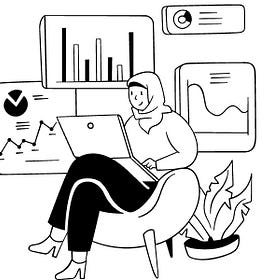Data for All?
Why self-serve analytics is so hard to get right
For years, data companies have been selling the promise of “data democratization,” the idea that anyone in an organization can access and use data to inform their decisions. The vision is compelling: if each decision could be improved by just 1% with data, the cumulative impact would be game-changing.
In my research for the company I'm building, I've conducted over 100 interviews with data teams, business teams, data founders, and everyone in between. Surprisingly, I haven't found a single company with more than six power users of their self-serve analytics tool. Most have just one or two, while the rest rely on pre-built reports.
For years, I've been curious about why self-serve analytics is so challenging. It's clearly not a simple issue; if it were, we would have solved it by now.
Over the next few weeks, I'll share some observations on why achieving self-serve analytics is so difficult, drawing from my decade of experience working with and on data teams, as well as new insights from customer interviews and research. I'll explore both the technical and organizational/psychological barriers, and how these might be challenged in the age of AI.
These insights will ultimately inform the development of Raisin Data, which aims to make every person a data-driven decision maker. And I hope they can be helpful to anyone else interested in this problem.
First up in this series:
The Paradox of an Insight – how false expectations about what we’ll discover in the data are harming our ability to leverage it in practical decision-making. 👇
The Paradox of Self-Serve Analytics
In today's data-driven world, teams are increasingly reliant on self-serve data tools to explore and leverage data without the help of the data team. However, a paradox emerges in the constant quest for an interesting insight. The practical reality is that “interesting” insights often bring more doubt than clarity.



Can't wait to see where this grows! It's about time to honestly grapple with how challenging the last-mile of data is (where it meets real life humans).
The first installment sounds intriguing exactly because what we mean by "insight" and how it's actually useful isn't as clear as we sometimes make it sound...